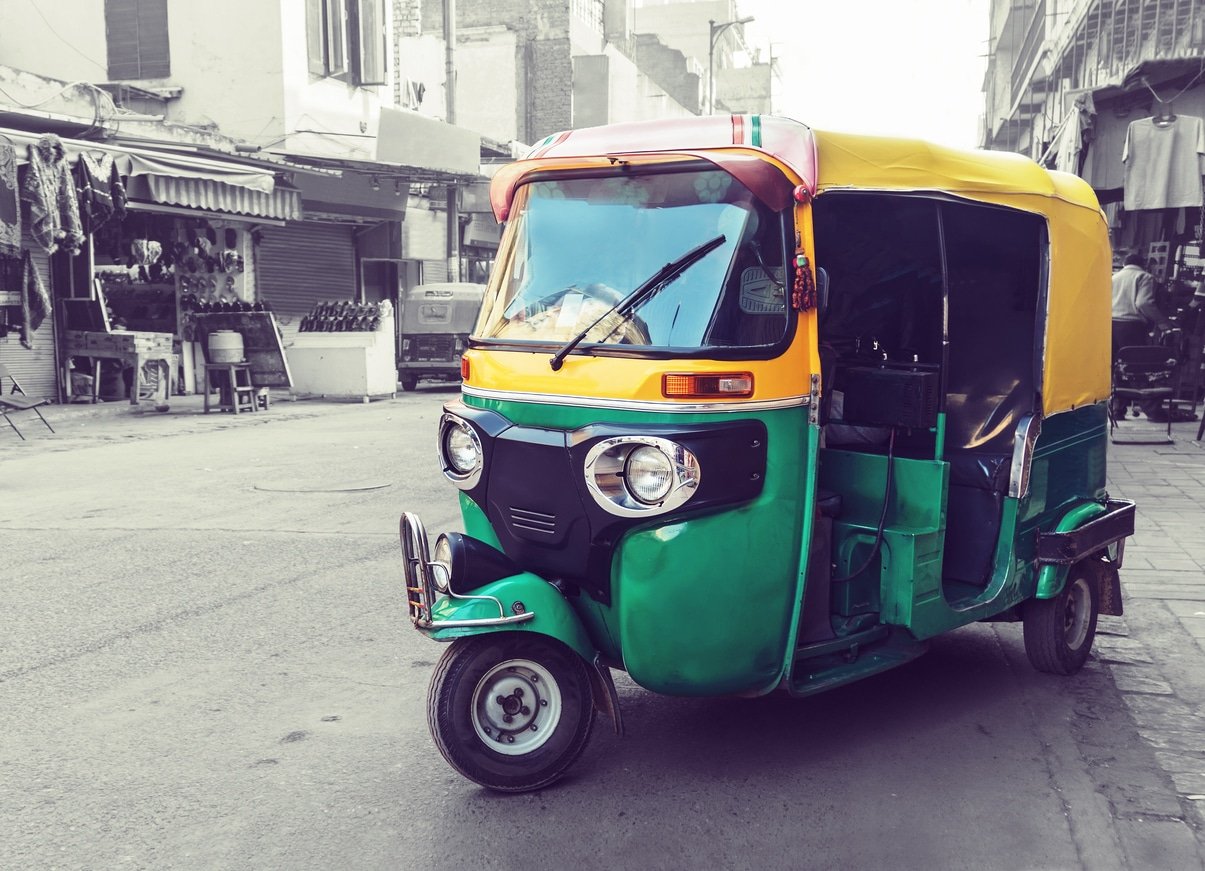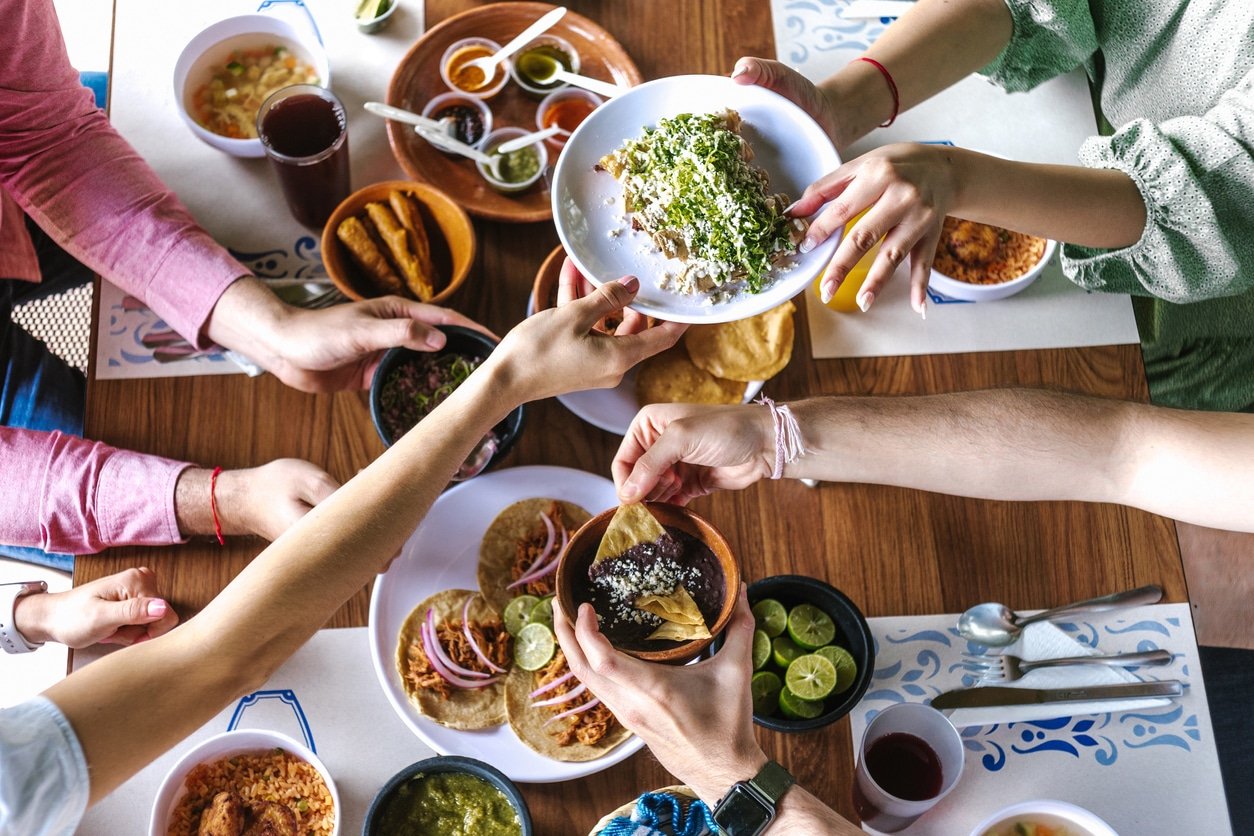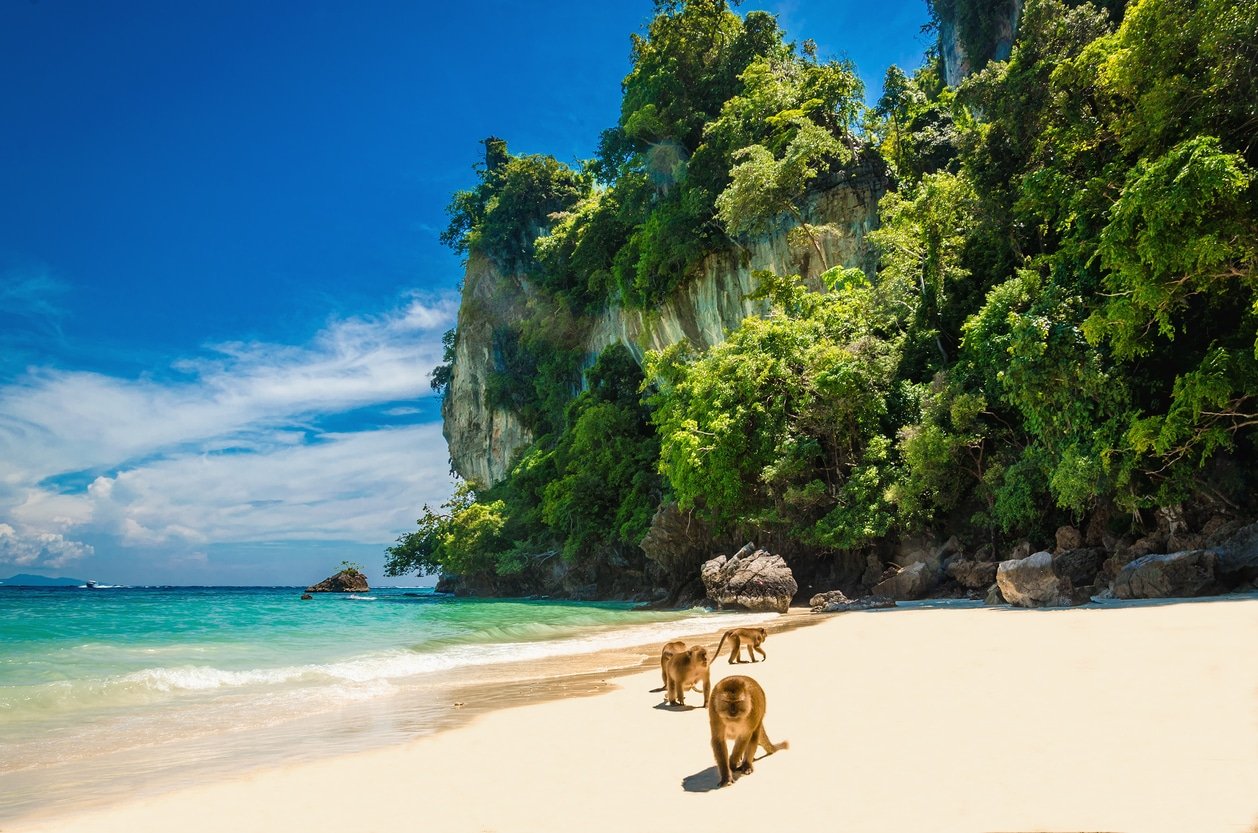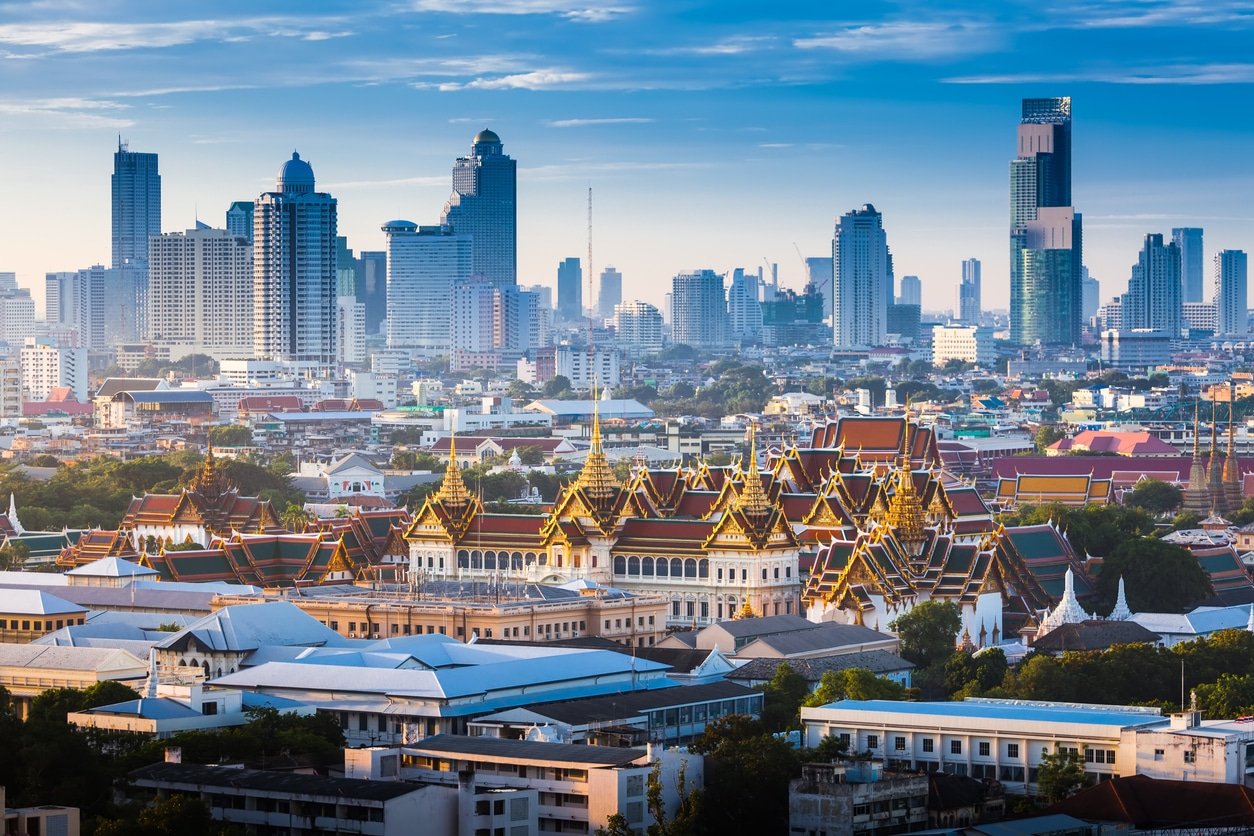The Tuk Tuk In Thailand: An Insider’s Guide & Tips For This Iconic Three Wheeler!
If you’re in Bangkok or other major cities in Thailand and looking to make a short trip across town, look no further than the ubiquitous tuk-tuk. These three-wheeled, onomatopoeically-named vehicles can be seen throughout Bangkok, weaving between the larger cars and trucks, beating the congestion and keeping the bustling Thai capital moving.
Also known as the auto-rickshaw, these nimble taxis are a fun and safe way of getting around this metropolis.
But they are not exclusive to Bangkok; throughout Thailand, and indeed, Asia, you can find variations of the tuk-tuk being used to transport people and goods around the inner cities. Or ones that have been converted into food stalls and even bars – more on that later!
But as you travel through Thailand or Asia, you will see the designs change slightly from city to city and country to country. Even the tuk tuks in Thailand can change from city to city, as we will show you right here.
Here we take a look at the tuk-tuks you may encounter during your trip to Thailand. We briefly look at their history, as well as how to use their services without issue. We also explain the differences between tuk tuks in different parts of Thailand, give you safety tips, show how not to be ripped off, and more.
CONTENTS:
- A Brief History Of The Tuk-Tuk In Thailand
- Bangkok Tuk-Tuks
- Ayutthaya Tuk-Tuks
- Phuket Tuk-Tuks
- Chiang Mai Tuk-Tuks
- Koh Samui Tuk-Tuks
- Are Tuk-Tuks Safe?
- Should I Take A Tuk-Tuk Or Songthaew?
- Repurposed Tuk-Tuks In Thailand
- Tuk Tuks In Thailand: Our Final Thoughts

A Brief History Of The Tuk-Tuk In Thailand
With the name tuk-tuk coming from the distinctive sound the engine makes, you might assume that their invention happened after the birth of the internal combustion engine.
But their history actually goes back a little further.
Before the motorized tuk-tuks that we see nowadays, there was the rickshaw. The word rickshaw originates from the Japanese word “jinrikisha”, which literally translates as “human-powered vehicle”.
In the period between the two world wars, Japan was the most industrialized nation in Asia, and in 1931, the Mazda Motor Corporation released the first auto-rickshaw, the Mazda-Go. In an effort to expand its influence over the region, the Japanese government distributed around twenty thousand of these auto-rickshaws amongst its neighbors.
These three-wheelers subsequently became popular throughout the region, especially in Thailand.
Following the Second World War, the Thais started to locally produce these vehicles, and the distinctive noise of the simple engines ticking over gave birth to the name we now all know and love – tuk-tuk!

Bangkok Tuk-Tuks
If you are in Bangkok for the first time, you have to make at least one trip in a tuk-tuk.
Like a regular taxi, you can just flag down a tuk-tuk on the street, or in some areas, you may see a group of them waiting at a street corner.
It’s always a good idea to agree the price before setting off on your journey.
In terms of pricing, they will not be much different from a regular taxi. But being smaller, tuk tuks can often use this to their advantage during times of heavy congestion in Bangkok.
Depending on where you stay in Bangkok, though, using the Bangkok Mass Transit System (BTS) or the Metropolitan Rapid Transit (MRT) may be more convenient for your trip.
However if you are staying in or around the Khao San Road area, the tuk-tuk may become your preferred mode of transport in Bangkok as this area is not well served by the BTS or MRT.
You can utilize the tuk-tuk to take you to or from the nearest BTS/MRT stations at Rachathewi, National Stadium, or Phaya Thai.
Phaya Thai station is also on the Airport Rail Link (ARL) system if you are heading to or from Suvarnabhumi International Airport.
A great way to enjoy some time on a tuk-tuk in Bangkok is to join the Tuk-Tuk Street Food Tour. Not only will you be driven around in a cool little tuk-tuk, but you will also be making lots of stops along the way to sample the delights of Bangkok street food.
For the foodies out there, Bangkok’s street food scene is something very special. There are not many places in the world where you can find Michelin-starred street food; yet Bangkok is one such place. So why not grab one of Bangkok’s tuk tuks and hit the streets for food!

Ayutthaya Tuk-Tuks
As you venture away from the metropolis of Bangkok, you may notice Thailand’s three wheelers seem to change slightly too.
Ayutthaya, around eighty kilometers north of Bangkok, is one place with quite distinctive tuk-tuks roaming its streets.
The locals have even nicknamed these ‘tuk-tuk hua kop’, which translates as ‘frog-head tuk-tuk,’ due to their distinctive green coloring and bug-eye headlights.
If you are planning a day-trip to Ayutthaya to take in the ancient ruins in this historic city, why not zip around seeing the sights from the comfort of a frog’s head?
Phuket Tuk-Tuks
If you’re heading south from Bangkok for some beach time, you may find yourself in the island province of Phuket—Thailand’s largest island.
And upon reaching Phuket, you should notice a big difference in the tuk-tuks in use here – there will be an extra wheel!
When moving about Phuket, there are a few hills to tackle; nothing crazy, but the usual Thailand three-wheelers sometimes struggle if weighted down with passengers. To make life a little easier in this respect, the drivers have adopted the Daihatsu HiJet microvan as their tuk-tuk of choice.
These larger vehicles will have two bench seats in the rear, and are more spacious and better at tackling the hilly roads of Phuket’s coastal roads.
Also popular in Phuket is the larger ‘songthaew’, a pick-up truck with two bench seats in the back. Songthaew translates as ‘two rows’ in reference to the seating arrangement in the back, and you will see these transporting people and goods around the island too.
Songthaews can operate in a couple of different ways too – some operate along set routes, like a bus. However others are available to charter, much like a regular taxi. The songthaews following a set route are often the cheapest option, so if you’re traveling on a budget they could be your best option.
You may also see the odd ‘traditional-style tuk-tuk’ chugging along the roads. But they will be less common than in Bangkok.
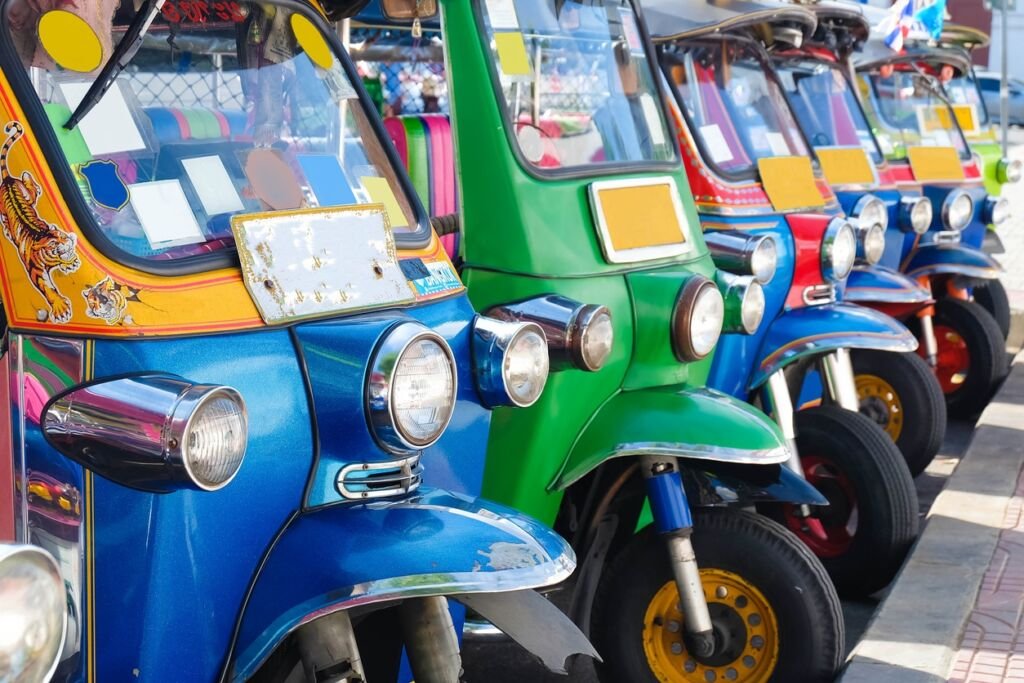
Chiang Mai Tuk-Tuks
For those heading north to Chiang Mai, you will be pleased to know you will be able to avail yourself of cool Thailand tuk-tuks to get around this city too.
Chiang Mai is Thailand’s second biggest city, and the tuk-tuk is a great way to get around and see the sights. The city is a popular stop for visitors to the nearby Golden Triangle area or for those looking to chill in the mountains of Pai.
There are plenty of songthaews in Chiang Mai too, usually a distinctive bright red, but you can find a tuk-tuk too.
Although the tuk-tuks in Chiang Mai can be a little pricier than the songthaews, they are a little more open and you can feel a nice breeze as you dart along the streets.
If you fancy a day exploring the various tourist sites in Chiang Mai, you can even ask about renting one with a driver for the whole day (expect to pay around 2,000 baht for the privilege).
Koh Samui Tuk-Tuks
Koh Samui, Thailand’s second largest island, is similar to Phuket.
The size of the island and the distances between different areas of the island mean that the songthaew has become the more popular form of transport on Samui.
But similar to Phuket, you will still see a few traditional Thailand tuk tuks on the roads of Koh Samui from time to time.
Again, these are convenient for a small journey, such as traveling the length of Chaweng Beach, but not the best choice for a longer trip between different beaches, perhaps.

Are Tuk-Tuks Safe?
Yes! They are no less safe than the other main modes of transport within Thailand.
The tuk-tuk is a great way to get around the busier cities such as Bangkok and Chiang Mai, but you still need to bring your common sense along for the ride too.
Be aware of the various “tuk-tuk scams” you may have read about, and look out for any red flags. You can learn about some of those common hustles in our special article on Thailand scams – you can read that here.
Always agree on a price before getting in the tuk-tuk, otherwise you may get a shock when you arrive at your destination.
Make sure your driver is taking you where you want to go, and not where he wants you to go, e.g., via his friend’s tailor/gold/gem shop. This is a classic, and you will be given a very hard sell in these friends’ shops.
When travelling in a tuk-tuk, be careful of your personal belongings. Make sure everything is secure inside and not likely to fall out. But also keep bags out of the reach of passing motorcycles and scooters. It’s not terribly common, but there have been incidents of motorcyclists stealing handbags as they drive past unsuspecting tourists in tuk-tuks.
If you have just arrived in Thailand, it is unlikely that you will know your way around Bangkok or Chiang Mai, but modern technology can be your friend here.
Before hailing or alighting your tuk-tuk, check out Google Maps on your phone. Find out how far away your intended destination is, and have a look at how much time Google thinks that journey should take.
Also on Google Maps, you can see traffic updates, informing you if the area has higher than usual congestion. Sometimes the driver may tell you he’s taking a longer route to avoid traffic, and, especially in Bangkok, this is often true. You can also keep an eye on the screen as you travel along Bangkok’s throughfares to ensure you are heading in the right direction and not taking too much of a scenic route that will result in a much larger fare.
But on the whole, tuk-tuks are a great way to explore Thailand’s cities and make for a perfect photo opportunity too.
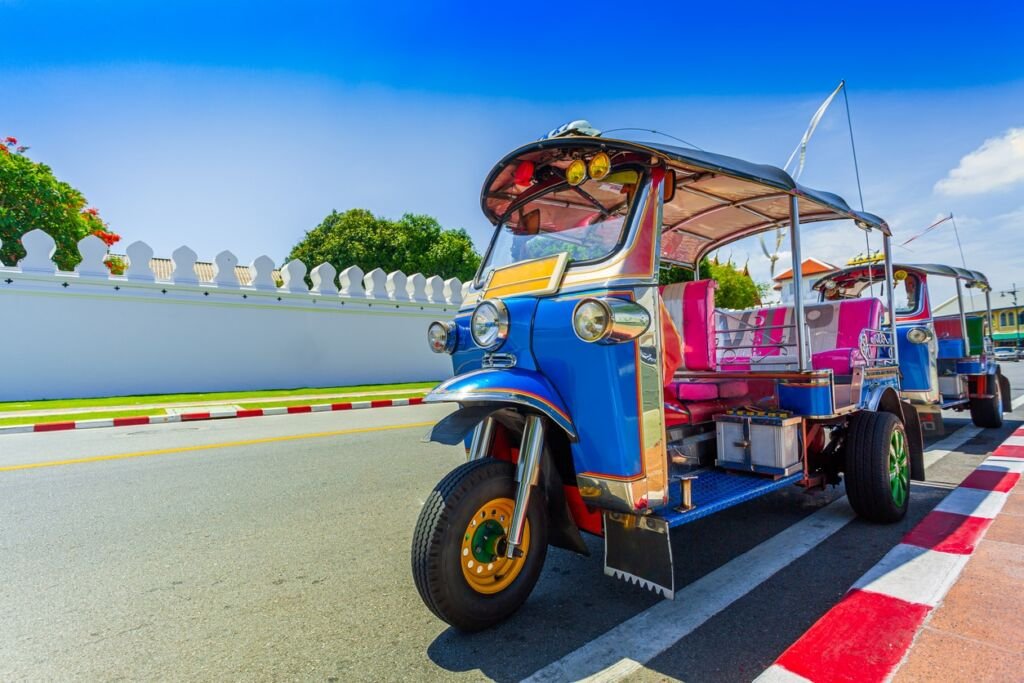
Should I Take A Tuk-Tuk Or Songthaew?
It depends. The ubiquitous tuk-tuk is the quintessentially Thai option, so you should make at least one journey in one.
But in some situations, other options may be more convenient. On the islands, especially where the hills are a little steep, a songthaew may be better.
For short journeys, such as travelling from Khao San Road to the Grand Palace in Bangkok, then the tuk-tuk is perfect, especially as other transport options like the BTS are not easily accessible to the Khao San area.
The other downside of the tuk-tuk is their size. If you are in a larger group, you will not all fit into one tuk-tuk. You can easily and comfortably fit two people into a tuk-tuk, maybe three at a push. If there are more of you in your group, maybe a taxi or a songthaew would be the better option.
And one other factor to consider is the weather. Although usually fitted with plastic sheeting, which can be unfurled to offer some protection from the rain, if it’s the rainy season and a big, tropical downpour is looming on the horizon, maybe a taxi will be better suited to keeping you completely dry too.
Repurposed Tuk-Tuks in Thailand
You may see tuk-tuks in Thailand being used for a purpose other than transportation.
In the ‘sois’ (‘soi’ is Thai for ‘side street’) of Bangkok, especially around Khao San Road and Sukhumvit’s party zones, you may see the tuk-tuk welcoming tourists in a different way – the tuk-tuk bar.
There are a few dotted around the tourist locations; some are fixed in position, some are still mobile, and they are cool little novelty bars, serving cocktails into the night.
You can find tuk-tuk bars on the southern islands too, such as Samui and Phuket. On some of the islands, you may even see some restaurants incorporating out-of-service tuk-tuks into their shop fronts or seating designs.

Tuk Tuks in Thailand: Our Final Thoughts
Get yourself out into the Bangkok streets and get that arm raised to flag a tuk-tuk down.
As long as you heed any red flags and use your common sense, the tuk-tuk is perfect for exploring Bangkok as a tourist.
While they’re not perfect for every journey within the capital, you should at least make one trip by tuk-tuk, and at night can be fun as that’s when a Thailand tuk-tuk will be vibrantly illuminated.
Just remember to agree everything upfront with the driver, keep your belongings secure, and enjoy the Bangkok breeze in your hair.
And if you find a tuk-tuk bar, don’t ask the barman for a lift home at the end of the night; you will need a different tuk-tuk for that journey…


